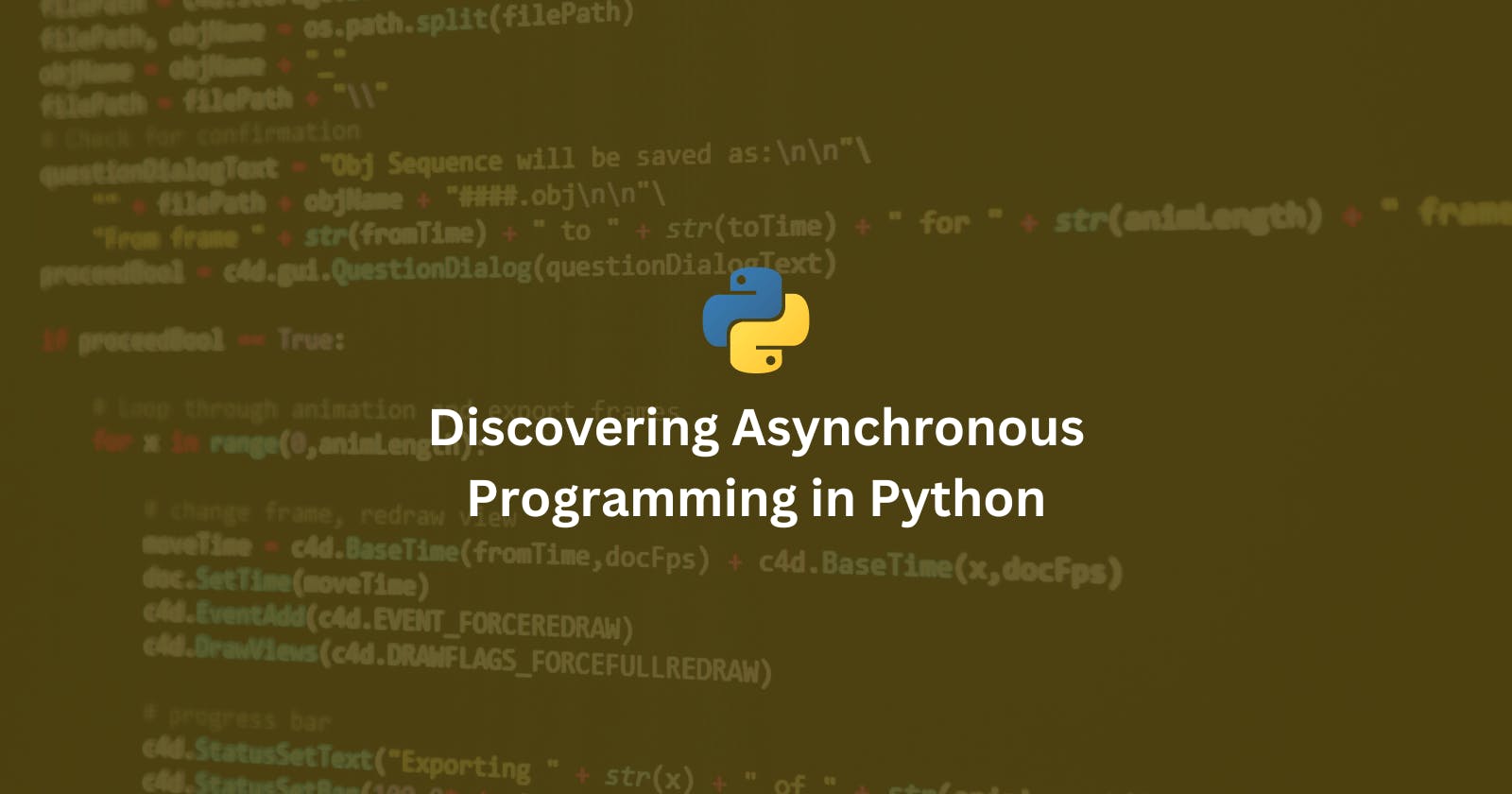Discovering Asynchronous Programming in Python: Your Essential Guide to the Asyncio Module
Hi there, code wranglers! Welcome to an exciting adventure where Python, our favorite user-friendly language, teams up with the speed and efficiency of asynchronous programming. Today, we're aiming our spotlight on the asyncio module—a Python standard library that's instrumental in managing asynchronous I/O operations.
The Asynchronous Advantage: Breaking Down the Buzzword
But first, let's decipher what asynchronous programming actually entails. It's a nifty style of programming that allows tasks to run "out of sync"—meaning you can kick off a task and promptly switch gears to another, while the original task completes in its own good time.
import time
def is_prime(x):
return not any(x//i == x/i for i in range(x-1, 1, -1))
# synchronous execution
start = time.time()
for i in range(100000000, 100000010):
if is_prime(i):
print(i)
print('Execution time:', time.time()-start)
In this synchronous example, the program checks if each number in the range is prime, one after the other. This process can take a while, especially with large numbers.
Asyncio Module: Python's Secret Weapon for Asynchronous Programming
Now that we're equipped with the basics, let's plunge into the dynamic world of the asyncio module. This core Python library is the bread and butter for handling asynchronous I/O operations. Using asyncio, you can craft single-threaded concurrent code involving coroutines, multiplex I/O operations across sockets and other resources, and even develop network clients and servers.
import asyncio
async def count():
print("Counting")
await asyncio.sleep(1)
print("Done counting")
async def main():
await asyncio.gather(count(), count(), count())
asyncio.run(main())
In this asyncio example, the count function simulates a time-consuming operation. The asyncio.gather function runs multiple instances of count concurrently, showing how asyncio can handle multiple tasks at once.
Decoding Asyncio: Core Concepts and Building Blocks
Coroutines
Coroutines are the real MVPs of asyncio and asynchronous programming in Python. These special functions have the ability to hit pause and then pick up where they left off, allowing Python to manage multiple tasks simultaneously—no multiple threads or processes needed! Coroutines in asyncio can be defined using the async def syntax.
import asyncio
async def hello():
print('Hello')
await asyncio.sleep(1)
print('World')
# Running the coroutine
loop = asyncio.get_event_loop()
loop.run_until_complete(hello())
loop.close()
This basic example of a coroutine prints "Hello", waits for 1 second, and then prints "World".
Tasks
Tasks are like promises for future results. They're a specific type of Future object that handles the execution of coroutines concurrently. When a coroutine is wrapped into a Task via functions like asyncio.create_task(), it's swiftly scheduled to run.
import asyncio
async def speak_async():
print('Async Speaking...')
loop = asyncio.get_event_loop()
task = loop.create_task(speak_async())
loop.run_until_complete(task)
In this example, we define a coroutine speak_async(), create a Task for it, and run the task in the event loop.
Event Loop
Lastly, the event loop is asyncio's very own timekeeper. It's a loop that can handle and dispatch system events as
well as queued callbacks. It's also in charge of executing our tasks and coroutines, taking care of starting them, running them, and stopping them, based on their readiness and the program's overall status.
import asyncio
async def count():
print("Counting")
await asyncio.sleep(1)
print("Done counting")
loop = asyncio.get_event_loop()
loop.run_until_complete(count())
In this example, the count function is executed within the event loop. The loop continues until the count function is complete.
Embrace the Async Way
As we can see, the asyncio module is a powerful tool in Python's arsenal, bringing the benefits of asynchronous programming to Python developers. So go ahead—embrace the async way, and watch your Python skills reach new heights!

